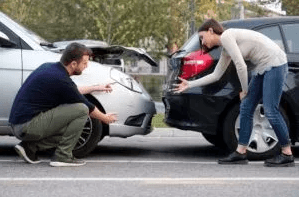After an auto accident, you may ask about damages to your vehicle, how they will get fixed, what your insurance will cover, and how you will recover from your injuries. But there is one critical question you need to ask to answer the others: why did the car accident occur?
If another driver’s actions caused a collision, you can sue the other driver for negligence in a car accident. By partnering with a qualified car accident injury lawyer, you can determine liability, prove negligence, and receive compensation for any damages related to the accident.
What Is Reasonable Care?
New York has a negligence guide that follows the reasonable person standard. This means individuals must exhibit a reasonable standard of care when operating vehicles.
Everyone who gets behind the wheel is required by law to exercise reasonable care. This obligation means drivers must obey traffic laws, use common sense, and be aware of their surroundings. Whether it’s another car, a motorcycle, bike, or pedestrian, every driver has a duty of care for others on the road.
If a driver’s actions don’t meet the standard of how a reasonable person should act, they violate the duty of reasonable care. Breaching reasonable care is negligent behavior. If another driver’s negligence is the reason for your injuries, you can sue the driver to compensate for all incurred damages.
For a free legal consultation, call (212) 732-2929
Negligence in a New York Motor Vehicle Collision
To determine negligence, the driver’s conduct is compared to a reasonable person. For example, an auto accident attorney would ask: “How would a prudent person act in the same situation?”
New York uses “pure” comparative negligence when both parties contribute to a car accident. Under this rule, a car accident victim’s compensation may be reduced based on how much their own negligence contributed to the accident.
For example, imagine you were in an auto accident that led to $10,000 worth of property damage. If your personal negligence (such as speeding or texting at the wheel) made you 20% responsible for the collision, your compensation would reflect that. Instead of receiving $10,000 in recovery, you would be entitled to $8,000.
In cases where the other driver’s negligence is 100% responsible for the auto accident, an accident attorney ensures plaintiffs recover 100% of the damages.
Proving Negligence in a Car Crash
When you sue the other driver for a car accident, you must provide evidence of negligence. You can demonstrate this by proving the other driver:
- Was not alert behind the wheel
- Did not signal when turning
- Exhibited improper use of high beam headlights
- Failed to use caution in bad weather
- Did not repair or maintain their vehicle
- Lost control of the car due to aggressive or reckless actions
Violation of the vehicle and traffic laws is evidence of negligence. If traffic violations are not refuted by the defendant, it will lead to a finding of negligence. Examples of conduct that are considered negligence include:
- Failing to obey traffic laws
- Driving while under the influence of drugs or alcohol
- Speeding
To prove another driver’s negligence caused a collision, consult with an experienced car accident lawyer to file an accident lawsuit.
Click to contact our personal injury lawyers today
Let a New York Attorney Determine Negligence in an Auto Accident
There are many ways a motor vehicle driver can be found negligent and liable for damages in a car accident. If you’re unsure whether you can sue the other driver for negligence in a car accident, a New York car accident law firm can help.
A legal expert from Dansker & Aspromonte Associates LLP can evaluate your accident claim and prove how the other driver’s negligence resulted in your injuries. A car accident attorney will gather necessary evidence, negotiate with an insurance company, and ensure the liable party is held accountable for their negligence.
Our skilled personal injury attorneys have represented clients in cases involving car accidents, construction accidents, severe injuries, wrongful death, and other serious incidents.
Call or text (212) 732-2929 or complete a Free Case Evaluation form

